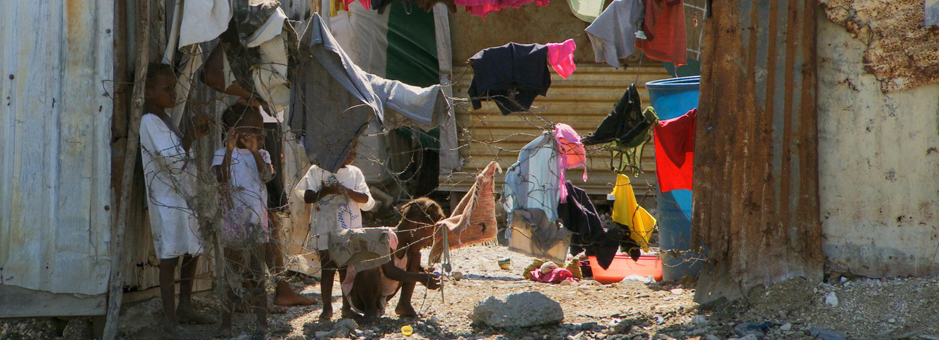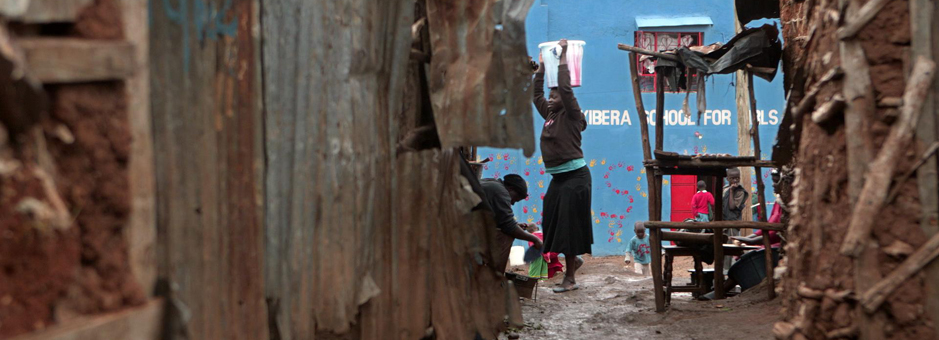Technicolor-PostWorks New York goes render-free between Baselight and Avid
Technicolor-PostWorks NY is a progressive and leading provider of comprehensive post-production services in New York, catering to the film, television and commercial markets.
For its feature finishing operations, Technicolor-PostWorks NY has long employed FilmLight’s Baselight among its roster of high-performance grading solutions. The Baselight systems are increasingly being used to create distinctive looks for prestigious television dramas and documentaries at the facility.
In recent months, Technicolor-PostWorks NY has found that FilmLight’s Baselight Editions for Avid—an integrated plugin for Media Composer and Symphony—has not only enhanced the grading capabilities within its existing editing software, but has also opened up the possibility of a fluid and flexible exchange of grades between editors and colourists, without the need to render each time. The result is a fast and cost-effective workflow: Technicolor-PostWorks NY can spend more time grading each episode with greater creative freedom provided by Baselight, while still offering a faster turnaround to their clients.
Baselight Editions
FilmLight recognised the power of making their colour toolset available in a partner application, as a means of condensing the workflow without compromising quality and functionality. The solution was Baselight Editions, a set of plugins for creative tools, including Baselight for Avid, Baselight for Final Cut Pro, and Baselight for NUKE.
Baselight Editions provide two functions.
First, they give the editor or visual effects artist access to the full Baselight toolkit, including mattes, windows, automatic object tracking and keyframe animation. So a sophisticated grade can be created in the editor or effects software, if required, or adjusted at any stage of the process.
Second, they read and implement, in real time, any grading information that is included in the metadata attached to the raw content. So a colour grade does not need to be rendered before being handed over to the editor, for example: the grade will be recreated in the editor from the metadata.
When swapping content between editorial, effects and grading, the same raw video is used. The grade, like the EDL, is metadata within a compact file format that can be moved between devices in seconds. Whether the grade is created in the host software or imported from a Baselight suite, any updates to the look just result in an addition to the metadata. No changes are baked in, and colour decisions can be updated in moments.
The render-free workflow
At Technicolor-PostWorks NY, both the Avid edit suites and the Baselight grading rooms are connected to the same shared storage, so systems can read the native camera footage simultaneously.
When an offline edit is copied to the SAN, it can be accessed by an Avid Symphony for final conform and titling, or it can be accessed by a Baselight. All the grading information from the Baselight grading system is passed to the edit suites as metadata in the Avid AAF files. The same project can be running in two rooms concurrently, with the updates in one room appearing in the other as AAF files are exchanged.
For Mike Nuget, senior finishing editor and colourist, the fact that the AAF files open in Baselight or Avid in seconds means that it is simple to move sequences around. “There is no render to go out of Avid into Baselight or back. We are talking about making an AAF, which takes maybe 30 seconds.
“Because I am both the conforming editor and the colourist on some of my projects, not being limited to the capabilities of a typical review and title session when we go back to Avid is very beneficial – because of the Baselight plugin we still have the ability to touch colour,” he enthused. “Even when the final grade is completed in the Baselight with the Blackboard panel, Baselight for Avid gives us the freedom to adjust colour right up until the client’s final sign-off.”
As well as streamlining the process for the finishing artists at Technicolor-PostWorks NY and their clients, there are also strong technical reasons for working this way. Director of technology Matt Schneider pointed out that “one of our greatest areas of focus is how our SAN is utilised; we must always monitor usage wisely, and any strategy that minimises rendering is going to be embraced.
“In the past when working between different platforms like Avid and Baselight, the colourist would receive a flattened file from editorial, as opposed to the entire project and all of its individual layers. When the colourist’s work was complete they would create a new file for final titling.
“The greatest vulnerability of the flattened file workflow comes with editorial changes,” continued Schneider. “If you have to make a single self-contained file to hand off to colour, managing changes to the cut becomes more cumbersome. The render-free workflow makes navigating these changes a lot simpler.”
Colourist Anthony Raffaele, added: “I’m also reassured to know that when I drop in the AAF of my final colour that it will appear on the Avid exactly as it should. It means everyone is confident, whether viewing in Baselight or the Avid, that they are looking at the latest cut with the latest grade.”
A Path Appears
This fast and cost-effective workflow is demonstrated in Technicolor-PostWorks NY’s recent work on A Path Appears.
This wide-ranging film by authoritative and award-winning documentary maker, Maro Chermayeff, focuses on the issues of gender inequality. It features opinions and advocacy by well-known female stars like Mia Farrow and Eva Longoria, while investigative journalist Nicholas Kristof looks at critical social issues including sex trafficking, gender-based violence and child slavery.
This powerful film, which aired on PBS in the USA in January 2015, was shot in a wide range of locations and was finished at Technicolor-PostWorks NY.
“Because it’s a documentary highlighting some very complex and serious social issues, realism was the name of the game,” said Jeff Dupre, co-executive producer with Chermayeff. “We didn’t want to create any sort of stylised look. We wanted the footage to speak for itself.”
The show was shot largely on Sony F800 and Canon C300 cameras. “The F800 is brilliant in bright, sunny landscape exteriors, but not as great for darker and tricky interior locations,” said Dupre. “The C300 works better for those types of shots.
“Its portability also makes it much easier to travel to remote locations, and we ended up using the C300 for most formal interview set-ups, too.”
Dupre said they had become fans of the C-Log setting – the Canon Log Gamma curve. This is a high dynamic range, low contrast recording, delivering the maximum amount of detail into post – as much as 12 stops, even in low light recording. The results are excellent, but of course it does rely on a skilled colourist using the best tools to get the most out of the pictures.
Mike Nuget was the man responsible, using one of the facility’s Baselight grading suites.
The company has a strong reputation in non-fiction television: science, nature, documentaries and reality television. Traditionally, the very tight timescales needed to deliver these projects, together with the challenges of story-telling with a large amount of raw footage, has meant that the bulk of the time is given to editorial. Colour correction was done inside the editing software.
More recently, producers have sought to gain an edge with audiences by giving their documentaries and other shows a distinctive look. The Baselight grade is now seen as an essential part of the post workflow. It allows documentary makers to use the best cameras around, like the F800 and C300, confident that the output will look compelling. In documentaries – particularly those as powerful as A Path Appears – audiences need to focus on the content, with the grade supporting the story-telling.
“The F800 looks pretty fantastic coming out of the camera for bright and sunny exteriors,” said Dupre. “The challenge with this project was to take the vastly different locations and looks, and make them as uniform as possible.
“Most of the segments in the US were filmed during the winter in places like Chicago and Boston, where it was overcast nearly all the time,” Dupre continued. “Many of the interiors were very low-light situations with a lot of fluorescent lighting, which is always tough.
“To make those locations look great, we had to lean a lot on our colourist, Mike Nuget.”
For an issue-driven documentary, naturally the workflow on A Path Appears was to complete the editorial then deliver the complete package to grading and finishing. Nuget then had the whole programme with titles, and could concentrate on a consistent grade which underlined the message.
“For most of our projects up to now, we have used colour correction software included in an edit package,” said Dupre. “Using Baselight gave us a clear difference in quality – with the caveat that Mike was really able to use the Baselight tools efficiently and excellently to give us a fantastic colour correct.
“We are lucky enough to have an extremely organised editorial support staff on our end,” he added. “So what we sent over to online/colour was very straightforward, allowing us to spend less time on conform and more time on colour where we needed it.”
The experience of grading on Baselight at Technicolor-PostWorks NY gave the producers a new understanding of the way colour could be used as an element of the production, and how the Baselight sessions could be included in a well-designed and efficient workflow.
“We are really looking forward to using Baselight moving forward,” concluded Jeff Dupre, who decided to utilise the workflow for his new series. “We’ve already sent several of our interviews to Mike to work his Baselight magic on them, so we can send out beautifully coloured segments to investors and networks.”
Multiple benefits
The ease of moving creative decisions as metadata means that the benefits increase with the complexity of the project. “Jobs that are going to require a lot of re-cuts, a lot of changes – that is where this workflow shines,” said Raffaele.
“The added flexibility and time saved rendering gives us the ability to focus on the more important things like colour.”
Similarly, as interest grows in 2k and 4k production, the time and disk space saved by not moving and rendering ever bigger files is also very significant.
The render-free workflow delivers benefits for clients: more flexibility and better final results. For editors and colourists, it means less time wasted on file transfers and renders and more time to finesse the work. For engineers, it means less pressure on shared storage and a more robust facility in general. For Technicolor-PostWorks NY, it is transforming the way that episodic television is delivered.
“Jobs that are going to require a lot of re-cuts, a lot of changes – that is where this workflow shines.
The added flexibility and time saved rendering gives us the ability to focus on the more important things like colour.”
Download
Technicolor-Postworks NY
Case Study (PDF)








